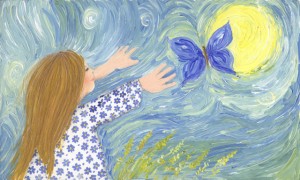
When you arise in the morning, give thanks for the morning light, for your life and strength. Give thanks for your food and the joy of living. If you find no reason for giving thanks, the fault lies in yourself – Tecumseh, Shawnee Native American Leader
One of the quickest ways to welcome more happiness and optimism into your life is to practice gratitude. Gratitude is a feeling we experience by noticing, and being thankful for, the blessings in our life. It can greatly transform our overall feelings of well-being. People who regularly practice gratitude experience better physical and mental health. We cannot experience negative emotion if we are feeling thankful. Gratitude is accompanied by feelings of peace and joy; it has the potential to change our thoughts from lack to abundance.
Anyone can adopt a practice of gratitude. At first it may feel uncomfortable, even insincere, but overtime it becomes easier and much more natural. What we focus on expands, and when we choose to notice our blessings we find more things to be thankful for. You can instantly experience more gratitude in this moment by appreciating the simple things that so many of us take for granted. Appreciate the fresh water that you drink, the warmth of the sun, the air that you breathe. Notice small acts of kindness, like someone holding the door for you, or buying your morning coffee. Practice looking people in the eye and genuinely saying “thank you”. Be specific in your praise. Something as simple as saying to a waitress “thank you for your great service” will help boost their mood as well as your own. Take note of how the feeling of gratitude affects your body. Where do you feel gratitude? What thoughts strongly evoke feelings of gratitude? Practice these thoughts often.
Beginning and ending your day with a gratitude practice will evoke feelings of peace and joy. In the morning, before you get out of bed, take time to be grateful for the day ahead. Be thankful for the fun day at work, or the interesting conversation with a friend. Saying thank you in advance helps to set a positive tone for the day. So often people dread getting out of bed because they are worried about the things that might go wrong throughout the day; instead, practice being grateful for things going smoothly. At the end of each day, when you are lying in bed, think of the best thing that happened that day and say “thank you”. Often times people use the time before bed to reflect on what went wrong throughout their day; what someone said to offend them, how they were disrespected, lied too, etc. Or people spend the time mentally preparing a to-do list for tomorrow. Using this time to reflect on what you are grateful for will help you fall asleep in a positive state of mind.
Gratitude is a way of approaching life. It is a choice we make to focus on the good in each day. Post a list of blessings in your room, and choose to look at it often. Carry a list of blessings in your purse or pocket and look at it when you are feeling down. When we are thankful for what we have, we make room for more good things to come into our experience.
 Most of us have little problem answering the question “what do you want in life”?
Most of us have little problem answering the question “what do you want in life”? Each of us has an inner child who is longing to come out and play; to laugh, be silly, have fun and enjoy life. Our inner child is the curious, fun-loving part of our personality that seeks spontaneity and adventure. It wants to explore all that life has to offer with an open mind and heart. It knows how to have fun for the sake of having fun. Our inner child unapologetically embraces who we are, perceived flaws and all. When you connect with the spirit of your inner child healing takes place, leaving more room for joy, peace, and fun in your life.
Each of us has an inner child who is longing to come out and play; to laugh, be silly, have fun and enjoy life. Our inner child is the curious, fun-loving part of our personality that seeks spontaneity and adventure. It wants to explore all that life has to offer with an open mind and heart. It knows how to have fun for the sake of having fun. Our inner child unapologetically embraces who we are, perceived flaws and all. When you connect with the spirit of your inner child healing takes place, leaving more room for joy, peace, and fun in your life. The question to answer is this: Is my attention present? Consciousness is only ever here now. Thoughts and feelings cannot occur anywhere other than in the present moment. Our physical body exists only in this moment. However, our attention is unfixed in time and space. Our attention drifts away from the present as we experience memories or imagine the future.
The question to answer is this: Is my attention present? Consciousness is only ever here now. Thoughts and feelings cannot occur anywhere other than in the present moment. Our physical body exists only in this moment. However, our attention is unfixed in time and space. Our attention drifts away from the present as we experience memories or imagine the future.
Feedback